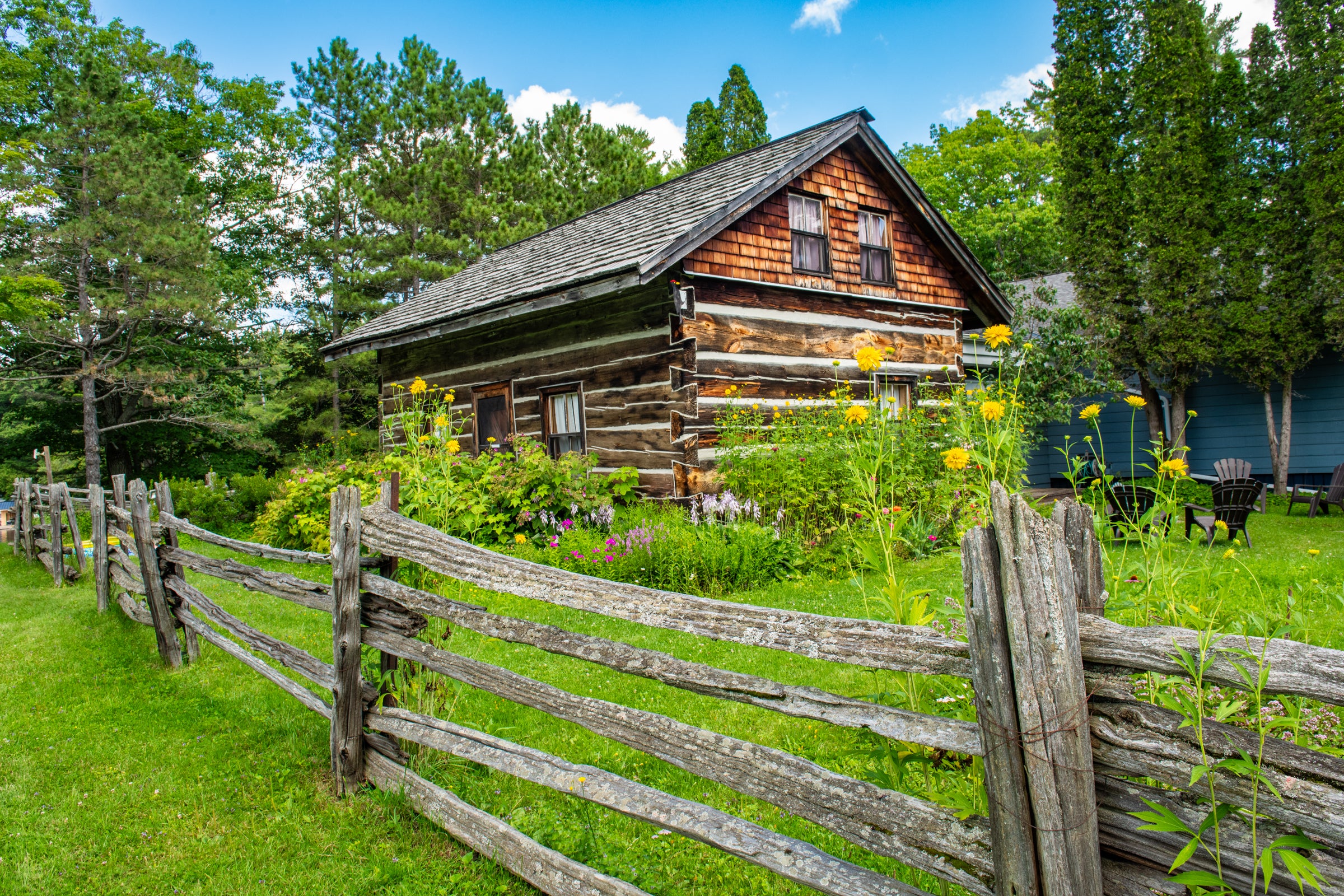
Heritage Curators – Muskoka Lakes Museum
Article by J. Patrick Boyer / Photography by Andy Zeltkalns
It seems appropriate as “the hub of the lakes” that Muskoka Lakes Museum can only be reached by walking on a bridge or arriving by boat.
Surrounded by water and the locks in the centre of Port Carling, an island known as James Bartleman Park is the setting of the Muskoka Lakes Museum. Indigenous culture and settler history are both connected to the land in Port Carling and thus, are both represented at the heritage centre.
Indigenous presence in Port Carling reaches into time beyond memory. Obajewanung, the 1800s Ojibwa settlement of log homes and field crops, mutated into the 1900s “Indian Village,” and today endures as an Indian River Reserve shared by Ojibwa from Rama and Mohawks from Wahta. But that is fairly recent history.
Liz Lundell, a museum director and author of Muskoka heritage books, notes the museum has more than Muskoka’s largest collection of arrowheads and spear points, resulting from longtime Indigenous presence. It also has stone tools used 11,000 years ago. An oblong window at the museum offers a view across river to the site where many of these items were found.
On display in the First Nations Gallery are a wigwam in its setting, clothing, tools and crafted wares. Information panels provide context and explanation of the items. Photographs show the much-evolved Indian Village of the 1920s, where crafters sold items made during winter to tourists in the summer. An exhibited canoe, toboggan and snowshoes are Indigenous technologies for easy year-round travel settler society adopted and continues to use to this day.
A photo of Maureen Bartleman (nee Benson Simcoe) of the Rama Chippewa community, hangs beside a reproduction of the Queen’s Park oil portrait of her son James – Ontario’s first Indigenous lieutenant governor, who was raised in Port Carling. Beneath the portrait are his books about First Nation experiences in Port Carling and beyond.
The museum began 60 years ago in response to a sense of urgency both seasonal and year-round residents felt as the 1950s ended. A societal shift was underway. Private automobiles and motorboats were closing out the golden age of steamboats and steam trains, changing how people got to and travelled around Muskoka. Pioneer-era buildings for schools, post offices and community organizations were disappearing. Homesteading families who lived Muskoka’s vital era were thinning out.
Toronto-based Muskokan Marion Catto spearheaded a campaign to preserve the rich heritage of Port Carling, crystalizing on September 9, 1961, with the creation of the Port Carling Historical Society. Members next envisaged a museum to preserve Port Carling heritage and offer tourists a new summer attraction. The next year, the museum opened in the Algonquin Hotel, lending its own heritage distinction because it had operated beside the Presbyterian Church since 1896.
Villagers’ enthusiasm for a museum was widespread and received strong support. Families donated all manner of items and records to the society. By 1964, more space was needed. Plans to demolish the Algonquin Hotel in 1965 – the telling loss of yet another heritage structure – forced the issue.
A log cabin to move to the island became the goal; to provide a space to display heritage information and artifacts. One option Marion Catto pursued was an 1880s log structure, built by Mr. Justice William Middleton and, at the time, owned by the Toronto jurist’s granddaughter, Susan Daglish. While Daglish avidly supported the goal of a museum structure, she could not offer up her family cottage. Instead, she donated some 30 prized artifacts, later became a museum director and remains an active participant to this day. As Daglish’s contributions show, there were, and continue to be, many ways to support the preservation of heritage in Muskoka.
Heeding Catto’s pursuit of a structure, the Hall family of Glen Orchard chose to part with their magnificent 1875 square-timbered cabin instead, ensuring the museum represented all of Muskoka Lakes, not solely Port Carling. Relocated log by numbered log to the island, the cabin anchors the museum complex.
The cabin and a contemporary structure beside it are combined as today’s Muskoka Lakes Museum. The Catto Gallery, named in honour of longtime supporters Marion Catto and her husband, Lt. Colonel Douglas E. Catto, houses feature exhibits which change yearly.
The museum’s extensive well-displayed collection testifies to people’s worthy donations of unique vintage pieces. The diverse embodiments of culture offer an enthralling, intimate study of society’s evolution as new technologies modernized customs, clothing, cooking, boating, sports and vacationing. Every aspect of life in Muskoka, from Indigenous culture and history to homesteading to boat building, is included in Muskoka Lakes Museum’s curated collection.
Port Carling’s community-minded citizens 60 years ago left a legacy for entertaining education. The museum is now poised to advance while preserving the past. The directors are aware of the need for an expansion of their facilities to exhibit heritage assets lacking space for presentation. During winter months, items from its stored collection are shown and explained on the museum’s website. But a more permanent solution to better showcase the vast array of heritage artifacts is needed.
An overhaul of existing exhibits is a major recent improvement. “They must tell a story,” emphasize directors Susan Hand, Liz Lundell and curator Sarah Sharpe. Going forward, they want narratives – people’s stories – to tie exhibits together, with displayed artifacts illustrating them. The stories, says Hand, must be the authentic voices of those who lived them.
